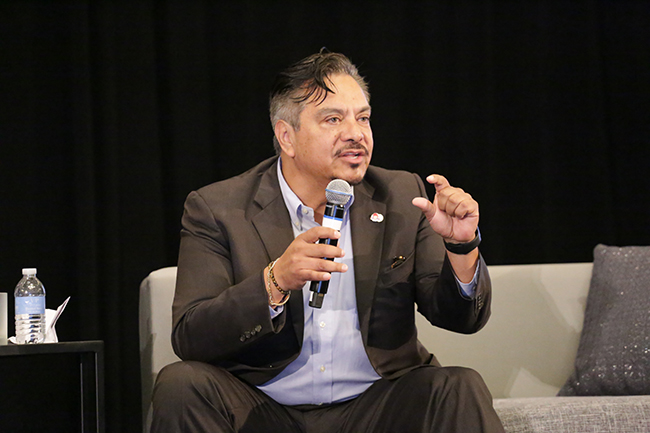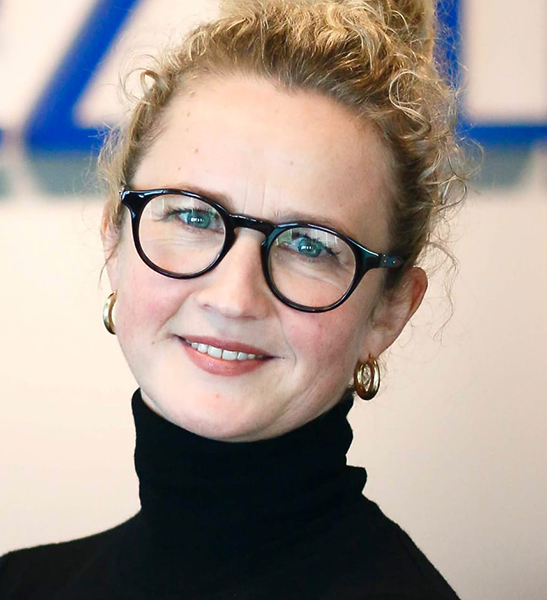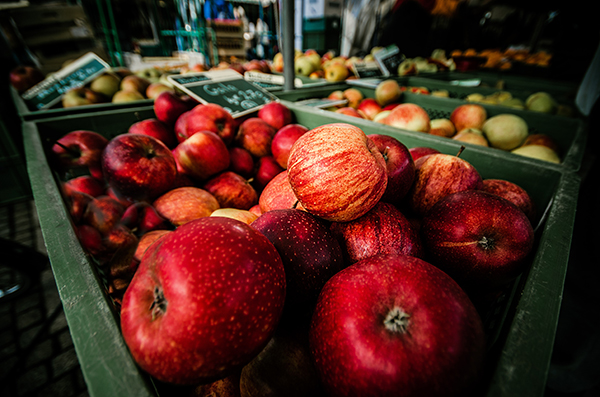It was a great pleasure for me to speak with Jorge Hernandez, VP of quality assurance at The Wendy’s Company, on behalf of the “Women in Food Safety” group and hear his perspective and tips for young female professionals in the industry. Jorge came to the United States for his college degree (majoring in microbiology), and he stayed ever since. He started his career in the food service industry and found himself passionate about food safety. It was this passion that allowed him to go so far in his career. I totally agree with him: You can do things well when you have passion. “That’s absolutely right. I don’t look at the time I put into it. Food safety is not an easy career, but it has been worth it, and I am very proud of that,” he said. Jorge emphasized how important it is to work hard in every position throughout the career path, as nothing will be wasted. “Every success encourages me, and every non-success taught me a lesson,” he added. One piece of advice Jorge offers to our young female generation: “If you want to build a career, learn from lessons at every stage and in every opportunity. You will use them later to build something very exciting and meaningful to you that you might not realize at the moment. Be patient. [The younger generation] seems to fall in and out of love with their careers very fast. I don’t think long-term careers are built that way. With my own experience, it has built one brick at a time. There’s a win and a lesson from every step throughout the path.”
Jorge encourages all young female professionals to walk through the doors that have been opened for them, work/study hard and push themselves. Study your trade: Maybe the ceiling is not shattered just yet, but you (young female professionals) are the generation that is going to shatter it, so go for it and be proud of yourselves!
Having food safety as a career has not only brought achievements to Jorge’s professional life, but it has also impacted his personal life. He has learned so much from working in the field. One thing has kept him going is that he is never satisfied, and he is always focused on finding better solutions and seeking continuous improvement. Jorge also uses this mindset to guide his kids—and although they sometimes may find it annoying, Jorge laughed and added that it’s true that it’s hard to maintain, but it’s so important.
I asked Jorge if he would choose another path or do anything differently if he could turn the clock back to 10 years ago (e.g., being a doctor was one of his initial plans). The answer is a confident and solid “no”. Jorge found the journey, and truly believed in it. If he could go back to 10 years ago, he would still tell himself: Trust yourself, trust your path, and don’t fret over the challenges. What Jorge would say about himself now is that he is in a wonderful stage where he is able to seperate work and life emotions and brings the joy from work home. “That is something I have learned, and it has enhanced my personal life,” he said.

Melody Ge: Tell us how you started your career and the journey to where you are today.
Jorge Hernandez: My school education and training was in microbiology and in the medical field. My goal was to become a doctor at some point. Finances fell through and I found myself in a situation where I needed to find a job. I found myself in the area of environmental health. We did all kinds of environmental health work: Water, air safety, noise pollution and food safety. The more I worked in food safety, the more I liked it, and it became more interesting to me. Eventually this turned into my career. In a way, it was one of those things that ended up being the best thing that happened to me. I discovered the passion of my life. You always have to keep your mind open to the possibilities.
Ge: Besides the passion, what makes you persevere through the obstacles in food safety industry?
Hernandez: One of the reasons that I fell in love with food safety was the fact that I could connect with people and make changes possible—whether it was in a person, process, or somewhere in the business. I’ve always been able to see the results of my effort. To me, that has been the biggest satisfaction—you can’t put a price on it, and that is what drives me.
Ge: What have you learned from working with women and bringing them through their career journey?
Hernandez: Diversity of thoughts—[whether it’s] women, men, different nationalities—they all bring a different perspective. I know I am generalizing here, but when they become leaders, they tend to be very caring for their projects and their people, and women are very good at problem solving. It makes the team stronger.
Food Safety Professionals: Earn Respect and Be True to Yourself | A panel discussion featuring Jorge Hernandez at the 2019 Food Safety ConsortiumGe: Could you please share an unforgettable story from your professional experience that had a big impact?
Hernandez: I was in a situation where I hired a young woman right out of college. She was smart, and she knew her role was going to be like. In the interview she told me that she wanted to have my job in X number of years. I brought her on board, was able to mentor her and saw her grow within her career. Like many do throughout their careers, she eventually moved on to an elevated position at a different organization. Fast forward to years later… I ran into her at a conference and she said, ‘thank you for what you did’. She is currently at a major organization as a vice president. The sparkle in her eyes and just saying ‘thank you’—it filled and rewarded me. That’s why I love what I am doing. This is a story of success. The point is: Go through the tough times—she worked through it. My job was to keep her motivated, provide guidance, and she got very far based on her skills and passion to always take her career to the next level. Being able to help people and see that growth is amazing, and it will carry with me forever.
Ge: If you could look into a crystal ball, what does the future hold for women in the food safety profession?
Hernandez: I think it’s a great time to be in food safety and quality assurance. I’d like to see more mentors stepping up—those women who have been in the industry and are being looked up to by women who are just entering the workforce. Each level takes their responsibility seriously—take that and show the way for the new folks, because we need them. We need those women and all young food safety and quality assurance professionals to be successful. They are the ones who are going to make foods safer for our families. That’s what I am excited to see. The barriers are not down, but I am very hopeful. And even with the challenges of the new generation, there are a lot of great people who will make a positive different in this industry. Those challenges will only be overcome if all of us, including the women, already in the industry, continue to mentor and grow the careers of young food safety professionals.


























